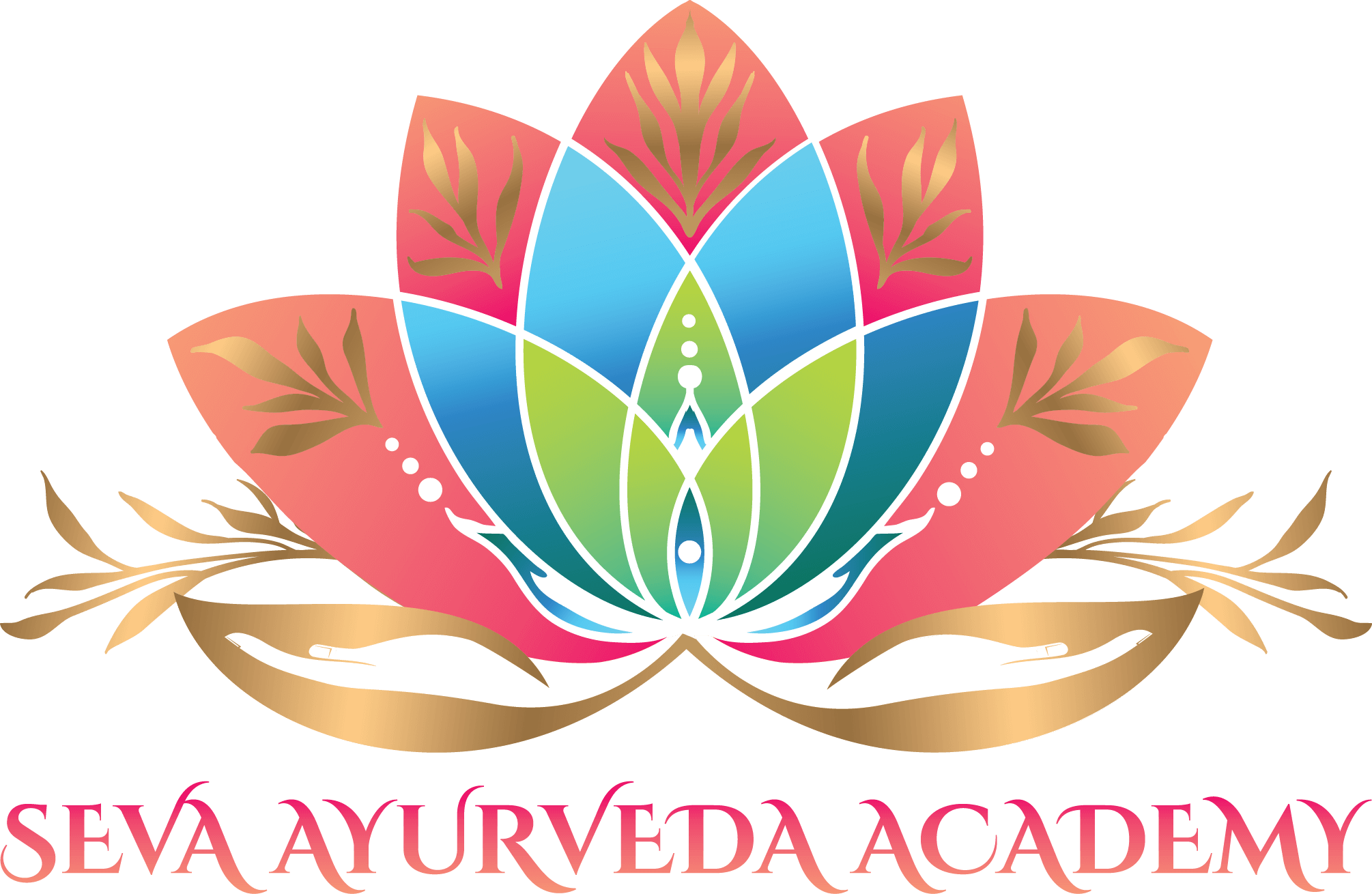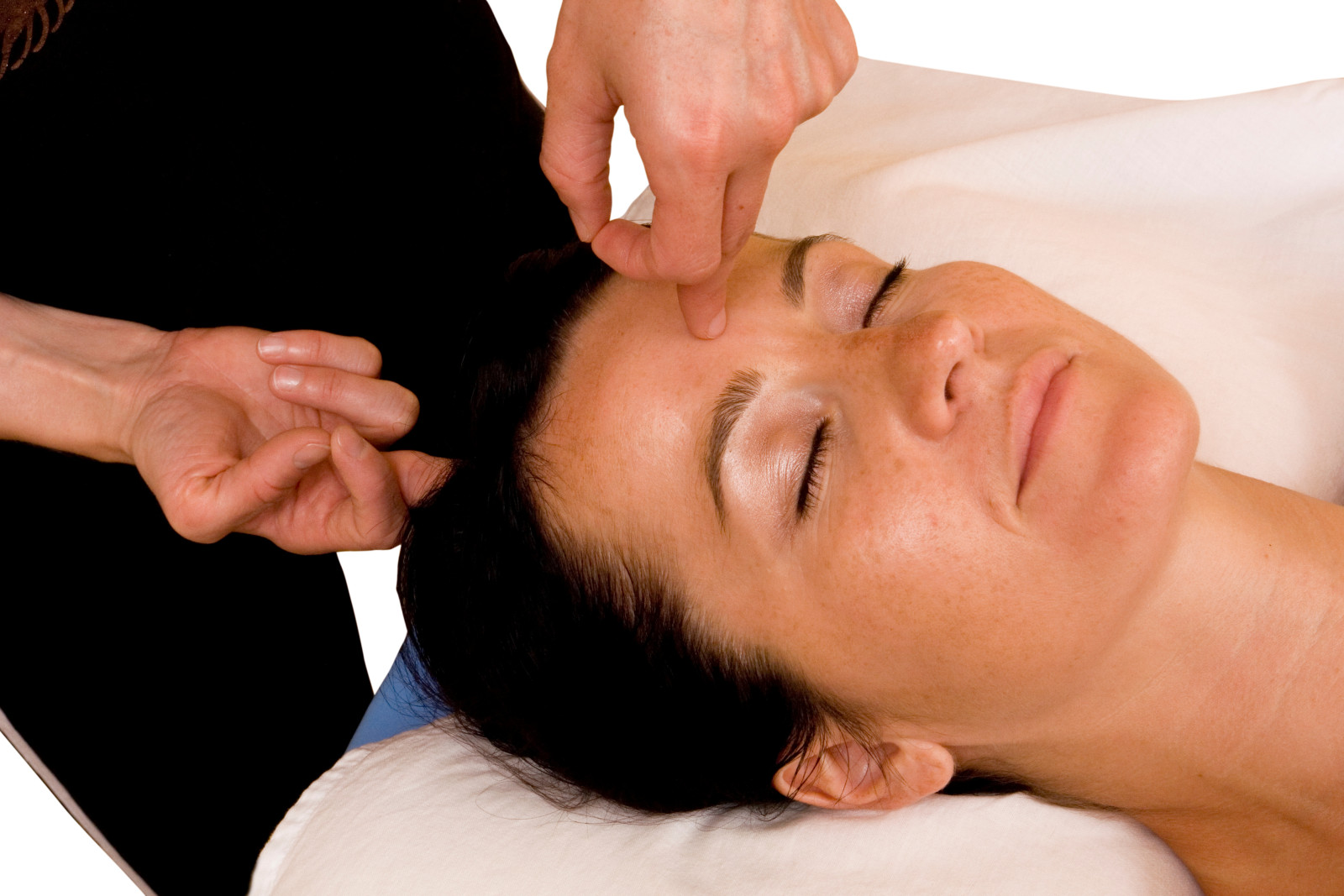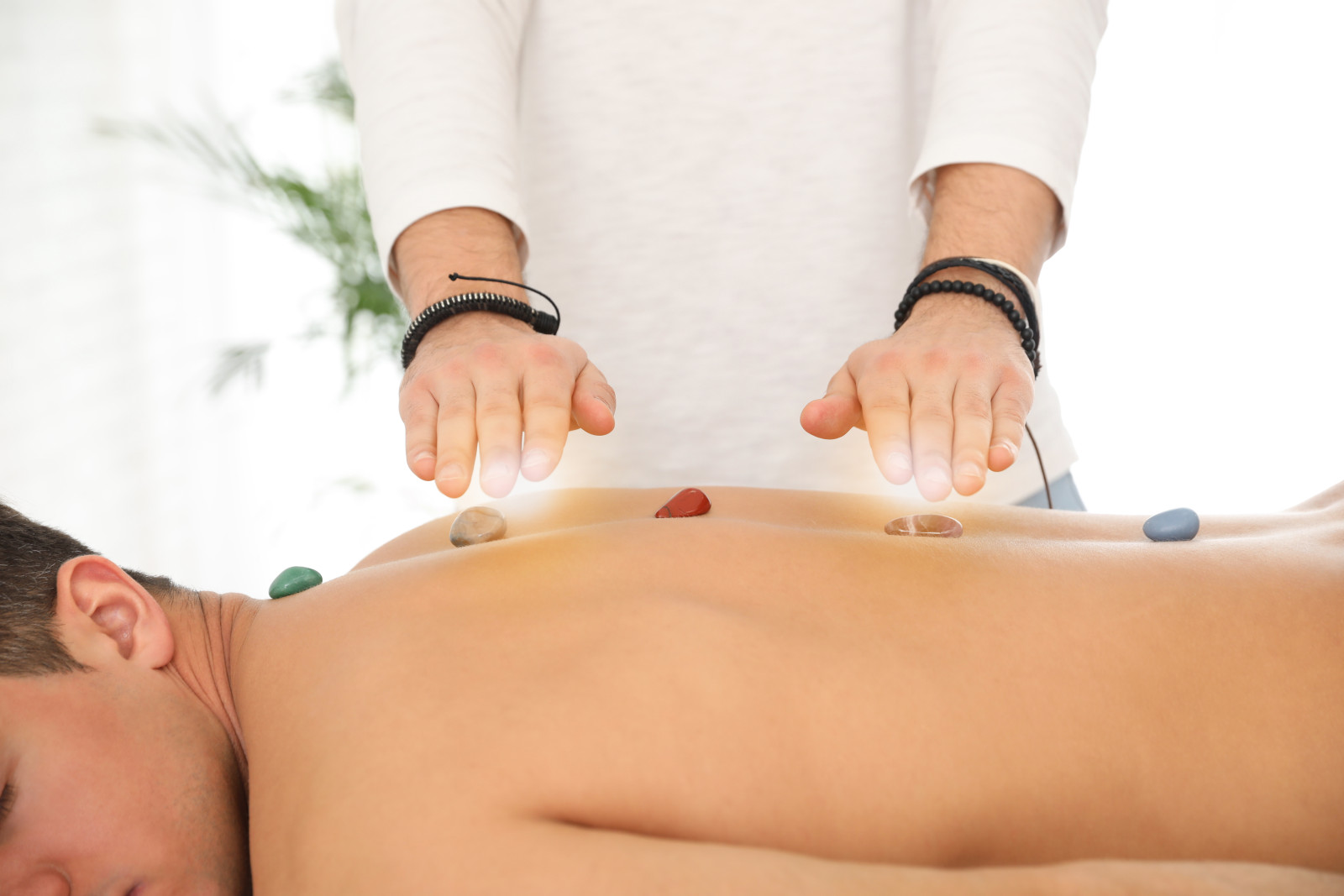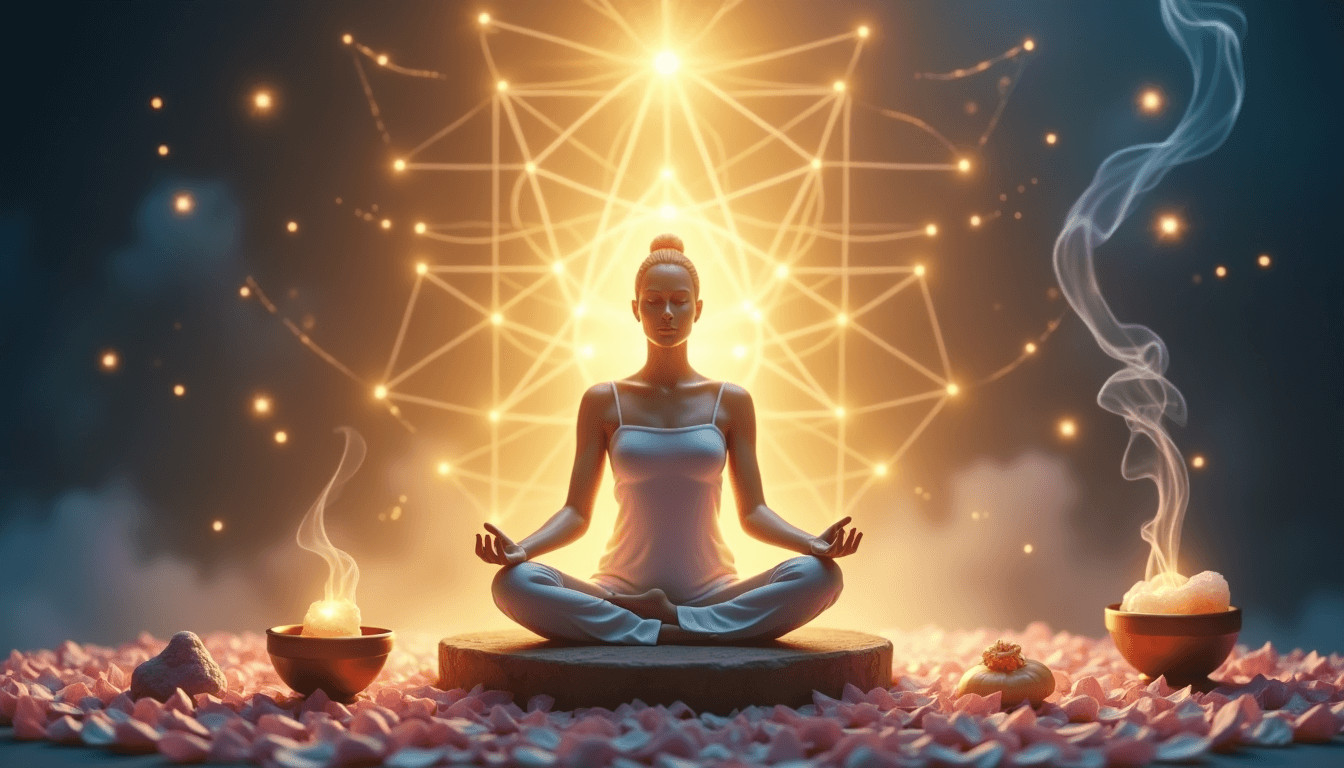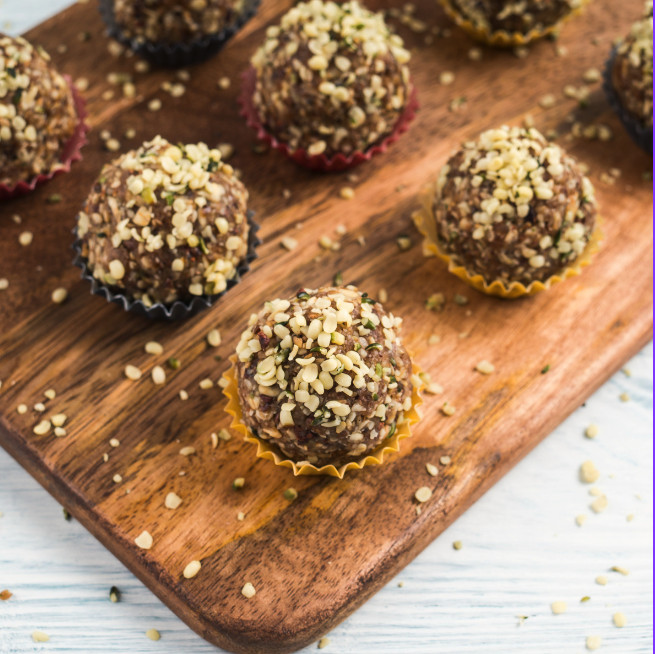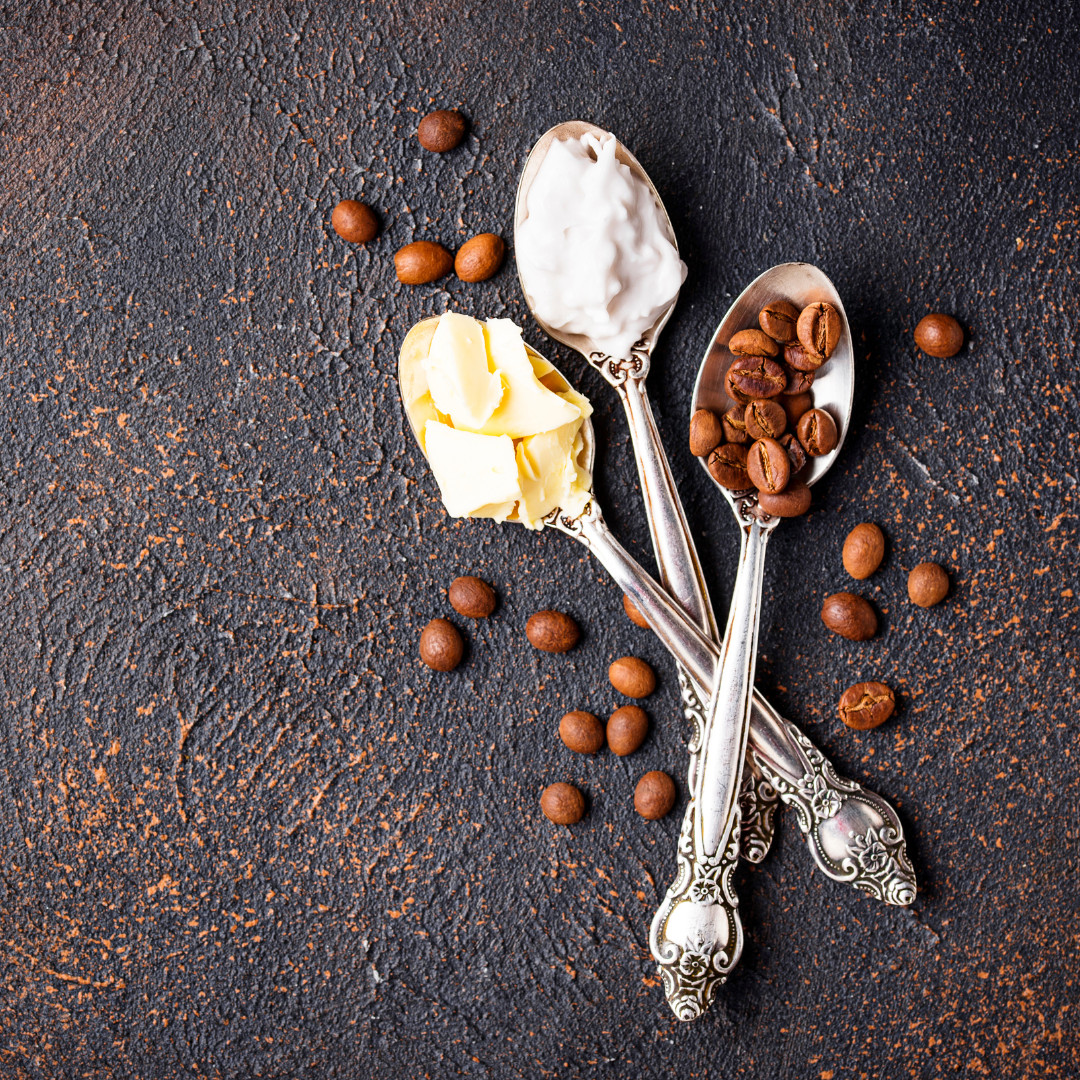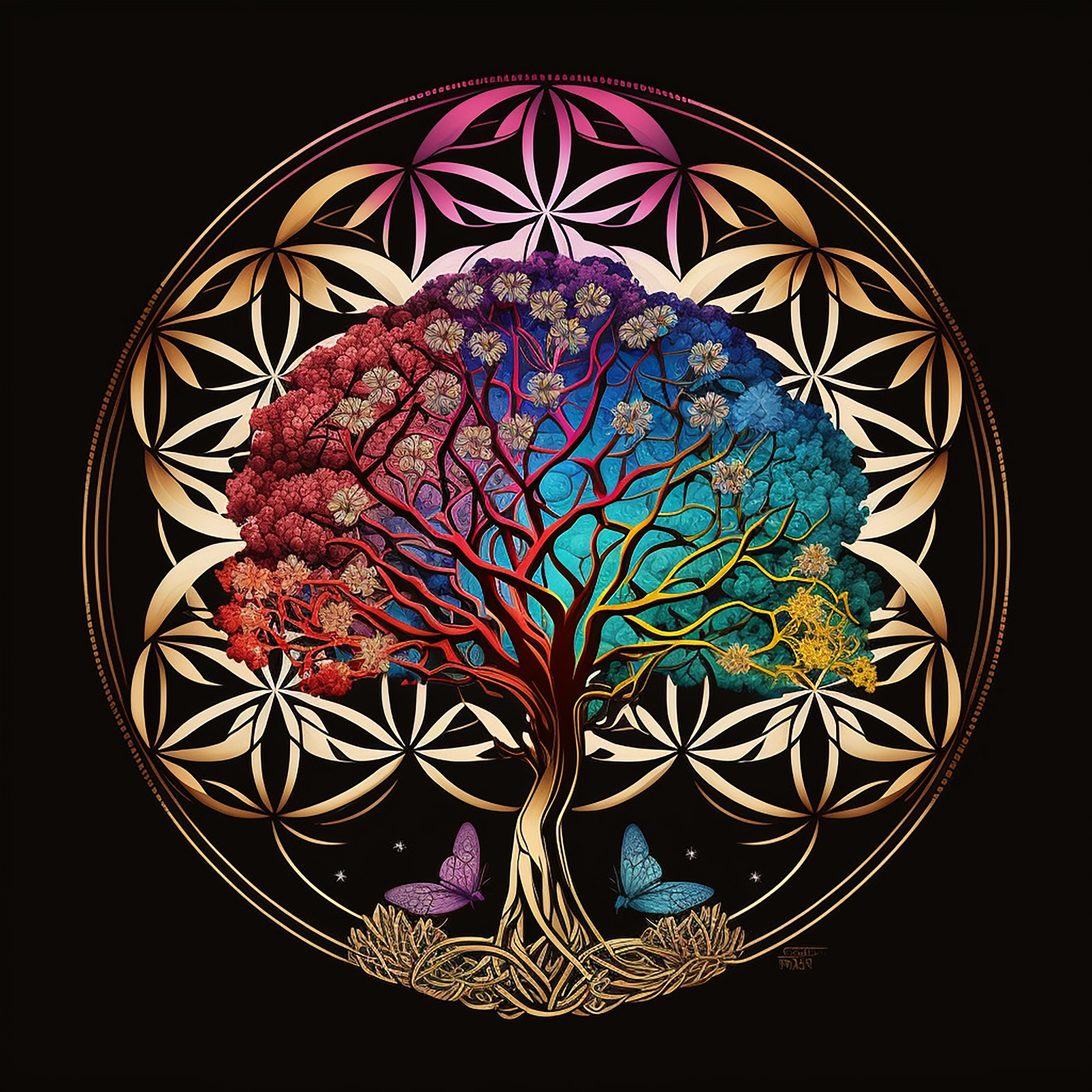The Current State of Hybrid Education in
Massage Therapy
Online learning appears here to stay, but does it work for entry-level education?
Our research indicates that numerous massage therapy schools have successfully integrated hybrid learning models into their curriculum, adapting to evolving student needs while maintaining high educational standards.
"The current state of massage therapy education is experiencing a notable shift toward more adaptable and accelerated learning formats," explains Kathleen Mazy, who owns Texas Massage Academy. "This transformation is primarily driven by students seeking flexible massage therapy certification options that accommodate their busy schedules."
Consider a typical 600-hour massage therapy program, traditionally completed in six to twelve months. Many schools now offer theoretical components through online platforms while maintaining in-person sessions for hands-on training. This hybrid approach has made pursuing a career in massage therapy more accessible, opening new pathways for aspiring massage therapists to enter the field and explore various massage therapy jobs.
What Does the Data Say?
A comprehensive 2023 study investigated how online versus offline teaching methods impact medical students' cognitive abilities. The research collected survey data from entry-level students who participated in online teaching during 2018 and those who received offline instruction in 2019 at Xiangya School of Medicine, Central South University.
The researchers analyzed several metrics, including overall physiology final exam scores, performance in different question types, and student engagement with National Quality Open Courses across various score segments under both teaching models.
The findings revealed no statistically significant differences between online and offline teaching models regarding total scores, short-answer questions (SAQ), and case study questions (CSQ). Interestingly, students performed better on multiple choice questions (MCQ) in the online teaching format.
The study also found that students with lower academic performance
achieved higher total scores in both MCQ and CSQ categories when learning online. The researchers concluded that online instruction was comparable to offline teaching in cognitive domains and proved more effective for developing lower-order cognitive skills. However, they noted that traditional offline instruction might better serve high-achieving students in developing advanced cognitive abilities.
Another 2023 study examined the effectiveness of blended (hybrid) learning compared to purely online or offline approaches in an evidence-based medicine course. This research evaluated examination scores from 2,100 undergraduate clinical medicine students across three groups: blended learning, online-only, and traditional offline instruction.
The results demonstrated significantly higher exam scores and pass rates among students in the blended learning group compared to both online-only and offline groups. Furthermore, when surveyed about their preferences, 71.6% of students favored the blended teaching approach. The researchers noted, "Implementing a blended education strategy in evidence-based medicine courses enhances students' learning motivation, independence, and overall satisfaction."
Hybrid Learning for Entry-Level Massage Therapy Education
One of the most challenging aspects of hybrid learning is its integration into entry-level massage therapy education. Since this foundational training forms the cornerstone upon which massage therapists build their entire careers, ensuring the effectiveness of a hybrid model becomes paramount.
"A well-structured hybrid model can effectively serve entry-level massage therapy education when thoughtfully implemented," explains Davonna Willis, who founded 4 Nineteen Education & Training. "While theoretical components like anatomy studies or business management courses can be successfully delivered online, the hands-on aspects of massage therapy require substantial in-person training to develop essential tactile skills and professional confidence."
Mazy suggests that in certain scenarios, a hybrid model might actually surpass traditional learning approaches. "Our massage therapy school program gives students the unique advantage of revisiting concepts they might have missed initially. Unlike traditional classroom settings, our online platform offers the ability to review material multiple times," she explains. "During on-campus sessions, we facilitate in-depth discussions about previously covered online material, providing students additional opportunities to deepen their understanding."A well-structured hybrid model can effectively serve entry-level massage therapy education when thoughtfully implemented.
— Davonna Willis
What are the Benefits of a Hybrid Learning Model for Massage Therapy?
For many students pursuing massage therapy jobs, balancing full-time employment with their education is a common challenge. The hybrid learning model proves invaluable in such situations. "Students maintaining full-time jobs while attending massage therapy school particularly benefit from this model, especially when studying science-based courses like anatomy," Willis notes.
Mazy emphasizes flexibility as another key advantage of hybrid learning in massage therapy education. "Our students appreciate the freedom to complete online coursework at their preferred pace," she explains. "Given our rural location, the hybrid model reduces campus commute time by half, making our massage therapy certification program more accessible."
The benefits extend beyond student convenience to impact massage therapy schools positively. "Hybrid education models can potentially boost enrollment numbers, which naturally strengthens the school's financial position," Willis observes.
As with any broad educational approach in massage therapy, the benefits of hybrid learning aren't universal. Different students pursuing massage therapy certification excel in varying learning environments. "Research, including my own studies, indicates that asynchronous learning particularly benefits students with consistently high academic performance," explains Susan Salvo, a respected author, educator, and massage therapy practitioner. "However, for average-performing students, live or synchronous learning environments typically yield better results."
Salvo further emphasizes that students who speak English as a second language or those with neurodivergent learning styles tend to achieve better outcomes in live, synchronous learning settings within massage therapy schools.
The Challenges of Hybrid Education
Some students find maintaining motivation more challenging in online learning environments. The self-paced nature of our programs can sometimes lead to procrastination or feelings of isolation.
To combat these challenges, Seva Ayurveda Academy has established a student community platform where learners can connect with peers pursuing similar massage therapy certification. Our hybrid model also includes regular live Q & A’s and discussions, ensuring students remain aware of available school resources and support.
Despite these obstacles, online components in massage therapy education appear to be a permanent fixture. Technology will play an increasingly vital role and for massage therapy schools to remain competitive and sustainable, they'll need to expand beyond traditional classroom lectures and incorporate additional educational tools, which we at Seva Ayurveda Academy are prepared to do.
Enhancing Your Massage Therapy Education with Marma Therapy
Incorporating marma therapy into your massage therapy education provides a unique perspective on holistic healing. As you delve into this ancient practice, you’ll discover a new dimension to your understanding of the human body and its energy systems.
To truly grasp the concepts of marma therapy, it’s essential to study the locations and functions of the 107 marma points. Each point has a specific purpose and is associated with particular physical and mental benefits.
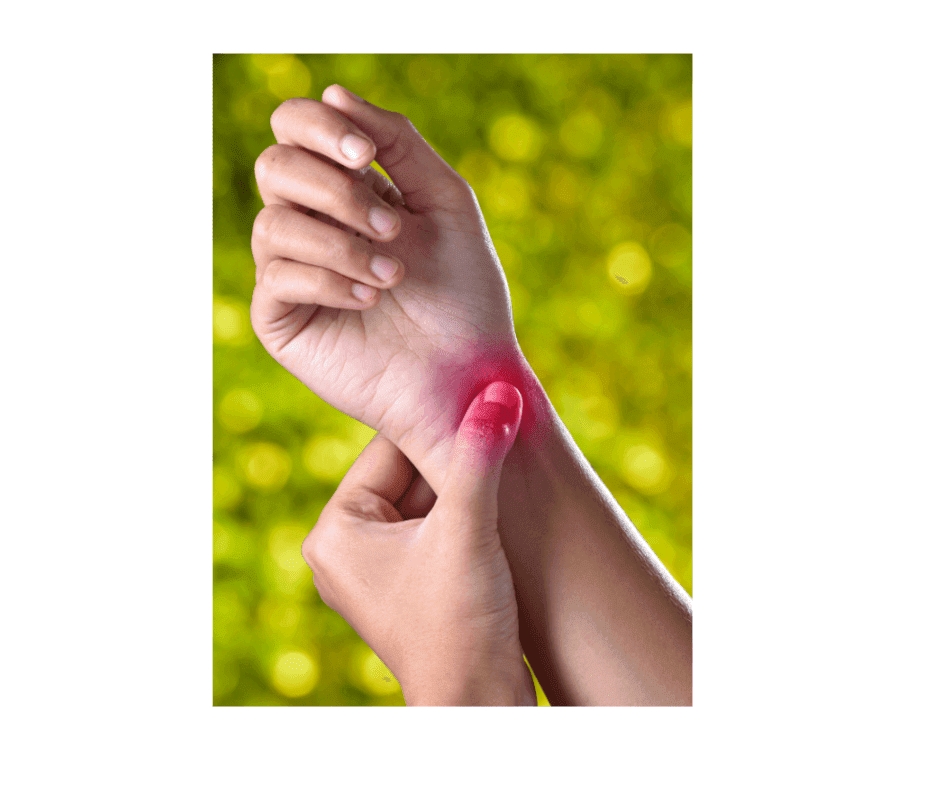
Hidden beneath your skin lies an intricate network of 107 vital energy points that ancient Indian healers discovered thousands of years ago. These points form the foundation of marma therapy, a powerful healing practice that has survived and thrived through centuries, and as a high demand service, there simply isn't enough therapists so we need inspired therapists!
Marma therapy combines precise touch, pressure, and energy work to unlock your body's natural healing abilities. As a specialized branch of Ayurvedic marma massage, this therapeutic approach addresses both physical ailments and emotional imbalances by targeting specific energy points throughout your body. Marma points can also be diagnostic tools for assessing body function. So understanding this subtle therapy can empower you even more for self care and client care.
Understanding the Ancient Science of Marma Therapy
The ancient science of marma therapy emerged from ancient India. Marma therapy's roots trace back to 4000 BC. Initially documented in ancient texts like the Sushruta Samhita, this healing art evolved into a sophisticated therapeutic system. The science was so valued that it earned the title of "half the knowledge of surgery" in Ayurvedic medicine.
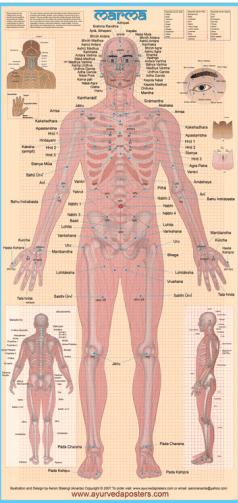
These points are classified based on their anatomical composition:
- Muscle and vessel intersections
- Bone and ligament junctions
- Nerve pathway convergences
- Organ and tissue connections
- Connection to Ayurvedic Principles
Marma therapy excels in managing various types of pain. The gentle manipulation of marma points helps release energy blockages, providing relief from musculoskeletal pain and joint issues. This therapeutic approach improves blood circulation and lymphatic drainage, supporting your body's natural healing processes. Studies show that marma therapy can effectively reduce chronic pain conditions while promoting tissue repair.
In today's fast-paced world, mental wellness is crucial. Marma therapy offers remarkable emotional benefits through its powerful ability to balance the nervous system. When specific marma points are stimulated, they trigger the release of neurochemicals like serotonin and melatonin, enhancing cognitive function and promoting better sleep.
The beauty of marma therapy also lies in its holistic approach - while addressing physical ailments, it simultaneously works on emotional and energetic levels. This integration of healing makes it particularly effective for those seeking a subtle and energetic approach.
The therapy has shown significant results in:
- Reducing anxiety and stress levels
- Improving emotional stability
- Enhancing mental clarity and focus
- Supporting better sleep patterns
- Energy Flow and Spiritual Wellness
Mastering marma therapy requires understanding both professional techniques and self-care practices. Making marma therapy a part of your daily wellness routine can amplify its healing benefits. Let's explore the essential methods and tools that make this ancient healing art effective in modern times.
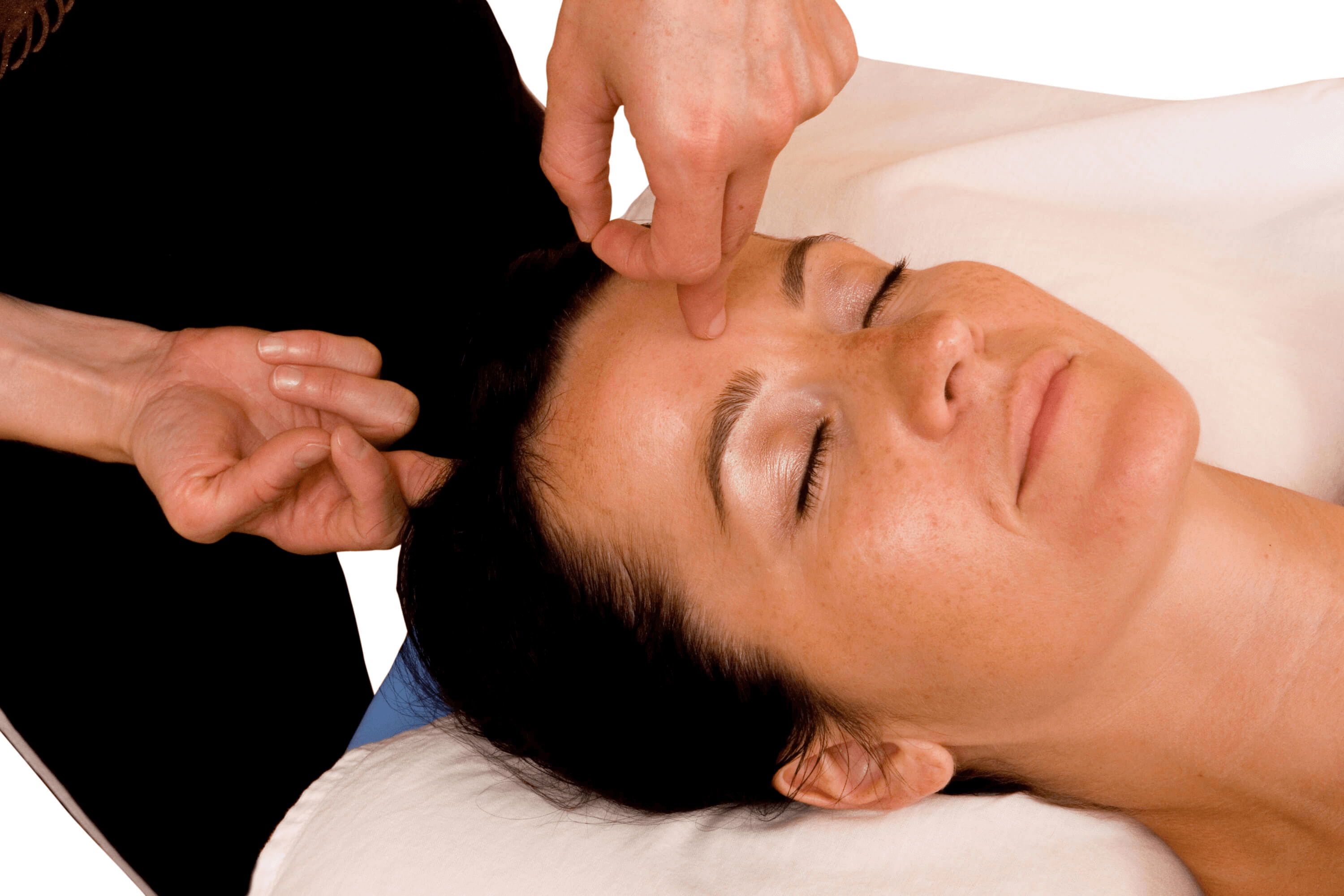
The effectiveness of marma therapy often relies on specialized tools and oils. The Marma Acupressure Stick, kansa wand or crystal wand, featuring both pointed and rounded tips, allows precise stimulation of energy points. Likewise, tools such as tuning forks, guasha, and moxibustion. Essential oils also play a crucial role in enhancing therapeutic effects.
A typical marma therapy session lasts about an hour on its own but can also be an “add on”, with treatments recommended weekly or as needed based on your condition
Marma therapy works beautifully alongside other wellness practices. It particularly complements:
- Massage Therapy
- Chiropractics
- Nurse Practitioner
- Yoga Therapists
- Physical Therapists
- Acupuncturists
- Naturopaths
- Yoga and meditation for enhanced energy flow
- Traditional Ayurvedic treatments
- Herbal medicine and dietary modifications
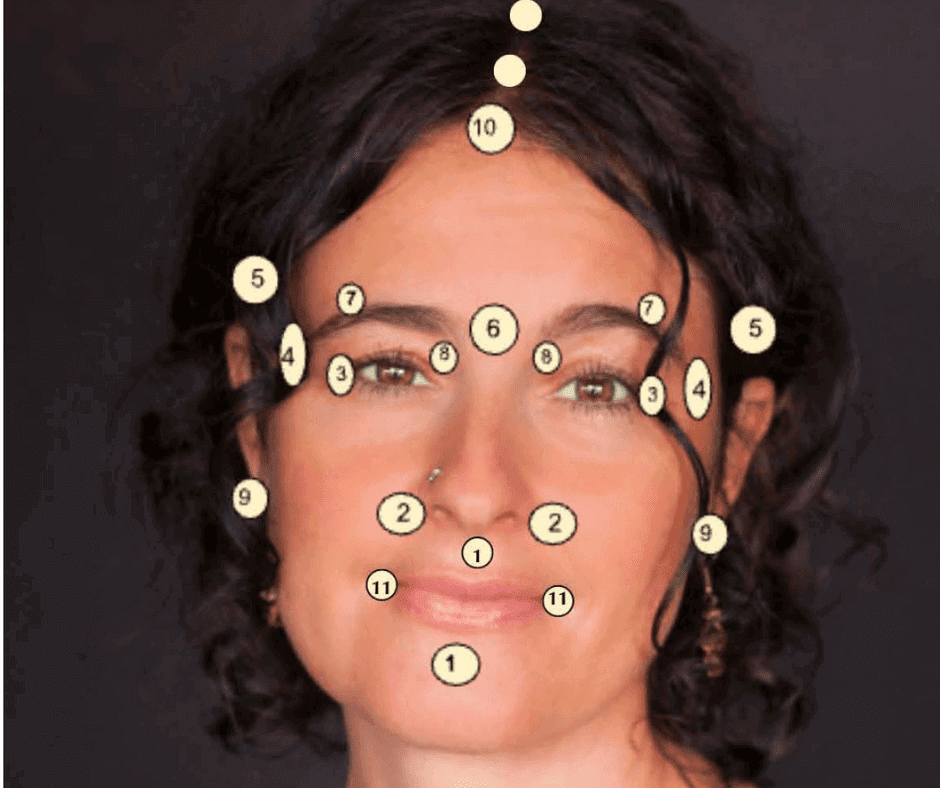 For self care, you can see the image here where I've mapped out all the facial points that you can work with. Try each one and notice your experience, build a relationship with the points by taking time to notice each one's therapeutic effect. By incorporating this practice into your routine, you're not just nurturing your skin, but harmonizing the flow of prana throughout your face body, promoting overall balance and vitality.
For self care, you can see the image here where I've mapped out all the facial points that you can work with. Try each one and notice your experience, build a relationship with the points by taking time to notice each one's therapeutic effect. By incorporating this practice into your routine, you're not just nurturing your skin, but harmonizing the flow of prana throughout your face body, promoting overall balance and vitality.Now, imagine being able to offer this transformative experience to your clients! Fulfill all your ceu's as a licensed massage therapist, or simply learn a new speciality and become an elite service provider for this high demand modality. Learn more about Marma Therapy Certification.

12 Ways To Make Any Recipe (especially Kitchari) AMAZING!!
1. Use Fresh Spices
Spices are a kitchari essential and if you are using stale, old, lifeless spices that have been sitting in your cabinet for over a year, well your kitchari may just taste lifeless too. By using fresh spices, you will be able to smell, taste, and feel the difference in ANY kitchari recipe…. and don’t be shy. Kitchari should be a beautiful golden color with specs of browns and blacks. If your kitchari is a pale yellow, you may need to add another dash of turmeric to your pot!
Spices are a kitchari essential and if you are using stale, old, lifeless spices that have been sitting in your cabinet for over a year, well your kitchari may just taste lifeless too. By using fresh spices, you will be able to smell, taste, and feel the difference in ANY kitchari recipe…. and don’t be shy. Kitchari should be a beautiful golden color with specs of browns and blacks. If your kitchari is a pale yellow, you may need to add another dash of turmeric to your pot!
Freshness tip: Try to make sure your powdered spices are less than 6 to 9 months old, your whole spices are less than a year old, and they are stored in an airtight glass jar out of the sunlight.
2. Sauté the spices before Cooking
Please do not simply add your spices into your already made kitchari! By taking a moment to sauté them in a small amount of ghee, oil or dry before the cooking process, you will undoubtedly enhance the flavor and aroma of your meal. In fact, your whole house will smell of delicious spice, your mouth will begin to water, and your digestive fire will be awakened!
Please do not simply add your spices into your already made kitchari! By taking a moment to sauté them in a small amount of ghee, oil or dry before the cooking process, you will undoubtedly enhance the flavor and aroma of your meal. In fact, your whole house will smell of delicious spice, your mouth will begin to water, and your digestive fire will be awakened!
Sauté tip: Sauté any whole seeds in the hot oil for about 2 minutes stirring frequently (they should begin to pop or crackle when done). The powdered spices will burn more quickly and should be only sautéed for 30 to 60 seconds, stirring constantly. This process should be done as the first step to your recipe and then the water can be added directly to the same pot after the spices (and onion, etc) have been sautéed.
3. Use Fresh ginger and freshly ground black pepper
Replacing your powdered ginger with finely minced fresh ginger will give any kitchari recipe more life and zing! Freshly ground black peppercorns will provide much more flavor. Although dry ginger will still bestow many health benefits, many people’s pre-ground black pepper tends to be very old, dull, grey, and yes, lifeless. Black pepper has so much flavor and so many health properties, but to really utilize them, we must think fresh!
Replacing your powdered ginger with finely minced fresh ginger will give any kitchari recipe more life and zing! Freshly ground black peppercorns will provide much more flavor. Although dry ginger will still bestow many health benefits, many people’s pre-ground black pepper tends to be very old, dull, grey, and yes, lifeless. Black pepper has so much flavor and so many health properties, but to really utilize them, we must think fresh!
4. Keep it exciting – switch up the ingredients!
Kitchari traditionally consists of mung dal, basmati rice, ghee, and spices. This is a great basic base, but if you plan to eat kitchari regularly, this will simply not do. I make kitchari using whole mung beans, red lentils, mung dal, or chana dal depending on my day’s preference. I also may use red rice, brown rice, quinoa, millet, or basmati for the grain. And when it comes to vegetables, the possibilities are quite vast – carrots, beets, bitter greens, spinach, broccoli, cauliflower, zucchini, sweet potato. . . OH MY! Even the choice of spices can greatly change the flavor. Get creative!
By choosing these various ingredients, you can change the flavor, the energetics (heavy, light, heating, cooling, etc), and even the healing properties of any kitchari recipe!
Kitchari traditionally consists of mung dal, basmati rice, ghee, and spices. This is a great basic base, but if you plan to eat kitchari regularly, this will simply not do. I make kitchari using whole mung beans, red lentils, mung dal, or chana dal depending on my day’s preference. I also may use red rice, brown rice, quinoa, millet, or basmati for the grain. And when it comes to vegetables, the possibilities are quite vast – carrots, beets, bitter greens, spinach, broccoli, cauliflower, zucchini, sweet potato. . . OH MY! Even the choice of spices can greatly change the flavor. Get creative!
By choosing these various ingredients, you can change the flavor, the energetics (heavy, light, heating, cooling, etc), and even the healing properties of any kitchari recipe!
5. Keep it healing – Focus on Health
Whether you are looking to calm your Vata, lose weight, strengthen your bones, or cleanse your liver, there is a kitchari recipe out there for you! You would want to use more heavy and nourishing kitchari ingredients such as basmati rice, sweet potato, and beets if your Vata is high, while focusing more on stimulating and lightening ingredients such as quinoa, onion, garlic, chili pepper, and bitter greens during times of weight loss. Similarly you will want to add in some calcium-rich ingredients for improving bone health (think sesame seeds, broccoli, leafy greens), and some liver-healing foods for liver cleansing (think bitter greens, fresh lemon juice, red rice, and olive oil). No matter your healthcare needs, adding in or switching up your typical kitchari ingredients will give you more variety and more focused healing!
Whether you are looking to calm your Vata, lose weight, strengthen your bones, or cleanse your liver, there is a kitchari recipe out there for you! You would want to use more heavy and nourishing kitchari ingredients such as basmati rice, sweet potato, and beets if your Vata is high, while focusing more on stimulating and lightening ingredients such as quinoa, onion, garlic, chili pepper, and bitter greens during times of weight loss. Similarly you will want to add in some calcium-rich ingredients for improving bone health (think sesame seeds, broccoli, leafy greens), and some liver-healing foods for liver cleansing (think bitter greens, fresh lemon juice, red rice, and olive oil). No matter your healthcare needs, adding in or switching up your typical kitchari ingredients will give you more variety and more focused healing!
6. Keep it Seasonal
Focus on season. Keeping your kitchari ingredients seasonal, will allow more variety of flavor throughout the year, while also providing you with the freshest, most nutrient-rich, and environmentally friendly ingredients.Not to mention mother nature is oh-so-wise and these seasonal vegetables will help to keep you in balance – no matter the time of year! Sweet potato, beets, carrots, and winter squash are in season during fall and winter and will help to keep you grounded and warm. Zucchini, yellow squash, asparagus, broccoli, and cauliflower are freshest in the spring and summer seasons and will keep you cool and hydrated.
7. Use Tasty Condiments
When it comes to kitchari, there are so many scrumptious additions to add to your dish. Each condiment will bring its own unique flavor – and health benefits too! The list is really endless but my absolute favorites are a spicy chutney (or any chutney you desire), shredded coconut, toasted sesame seeds, a scoop of tahini, chopped cilantro, fresh lemon or lime juice, and/or toasted almond slivers or cashew pieces.
As you can imagine, each condiment will add its specific qualities. For example, adding a scoop of yummy tahini to a bowl of kitchari will instantly give it some creaminess, bulkiness, warmth, and a delicious sesame seed flavor; whereas adding in some chopped cilantro will increase the cooling, cleansing properties of the meal and provide its own uniquely, delicious flavor. Mix and match and see (or rather taste) the possibilities as they unfold!
Focus on season. Keeping your kitchari ingredients seasonal, will allow more variety of flavor throughout the year, while also providing you with the freshest, most nutrient-rich, and environmentally friendly ingredients.Not to mention mother nature is oh-so-wise and these seasonal vegetables will help to keep you in balance – no matter the time of year! Sweet potato, beets, carrots, and winter squash are in season during fall and winter and will help to keep you grounded and warm. Zucchini, yellow squash, asparagus, broccoli, and cauliflower are freshest in the spring and summer seasons and will keep you cool and hydrated.
7. Use Tasty Condiments
When it comes to kitchari, there are so many scrumptious additions to add to your dish. Each condiment will bring its own unique flavor – and health benefits too! The list is really endless but my absolute favorites are a spicy chutney (or any chutney you desire), shredded coconut, toasted sesame seeds, a scoop of tahini, chopped cilantro, fresh lemon or lime juice, and/or toasted almond slivers or cashew pieces.
As you can imagine, each condiment will add its specific qualities. For example, adding a scoop of yummy tahini to a bowl of kitchari will instantly give it some creaminess, bulkiness, warmth, and a delicious sesame seed flavor; whereas adding in some chopped cilantro will increase the cooling, cleansing properties of the meal and provide its own uniquely, delicious flavor. Mix and match and see (or rather taste) the possibilities as they unfold!
8. Add some Ghee to your Bowl!
Whether you have used ghee to cook your kitchari with or not, I highly recommend adding a bit extra to your bowl upon serving. Adding in 1/2 to 1 teaspoon of ghee (per bowl) to your kitchari, directly before you are ready to take your first bite, will give your meal a very delicious flavor that will stand out! In the cooking process the taste gets lost, so if you like add a little more and enjoy!
Whether you have used ghee to cook your kitchari with or not, I highly recommend adding a bit extra to your bowl upon serving. Adding in 1/2 to 1 teaspoon of ghee (per bowl) to your kitchari, directly before you are ready to take your first bite, will give your meal a very delicious flavor that will stand out! In the cooking process the taste gets lost, so if you like add a little more and enjoy!
9. Use Broth as a Base
If you really want to yummy up your kitchari recipe, this recommendation will not disappoint!Replacing the water in any kitchari recipe with a broth of choice (bone, chicken, veggie, etc – homemade is best), will give a delicious flavor and yes, more health benefits!This recommendation is great during the fall and winter months when you are needing a bit more nutrition, healing, and warmth. It is also great during times of illness, Vata imbalance, and when you are coming off of a cleanse. Of course, I use broth anytime I simply want to add a delicious flavor and some excitement to my everyday kitchari meals.
If you really want to yummy up your kitchari recipe, this recommendation will not disappoint!Replacing the water in any kitchari recipe with a broth of choice (bone, chicken, veggie, etc – homemade is best), will give a delicious flavor and yes, more health benefits!This recommendation is great during the fall and winter months when you are needing a bit more nutrition, healing, and warmth. It is also great during times of illness, Vata imbalance, and when you are coming off of a cleanse. Of course, I use broth anytime I simply want to add a delicious flavor and some excitement to my everyday kitchari meals.
10. Share the Love, Eat in good company, and always be grateful!
Keeping to this recommendation can make any meal more enjoyable (and healing).It is always best to share your meals and when they are cooked by you, it makes it all the more special! If no one in your house wants your kitchari (sadly I can relate), then the next best thing is to sit, eat, and enjoy your meal in good company and good (light) conversation. If you are alone in your home, well then sit, breath in the aroma, enjoy the silence around you, and give thanks and blessings for your delicious meal!
11. Reheat the Right way
Reheating meals is not recommended for those who are trying to strengthen their digestion.. However, reheating is a reality for many of us (including myself!), and I personally believe that reheating a home cooked meal, making a frozen meal, or eating processed pre-made food is still a healthier option instead of eating out. So, if you have made a large pot of kitchari to eat for the next couple of days, here are some essential tips to reheating the right way!
Keeping to this recommendation can make any meal more enjoyable (and healing).It is always best to share your meals and when they are cooked by you, it makes it all the more special! If no one in your house wants your kitchari (sadly I can relate), then the next best thing is to sit, eat, and enjoy your meal in good company and good (light) conversation. If you are alone in your home, well then sit, breath in the aroma, enjoy the silence around you, and give thanks and blessings for your delicious meal!
11. Reheat the Right way
Reheating meals is not recommended for those who are trying to strengthen their digestion.. However, reheating is a reality for many of us (including myself!), and I personally believe that reheating a home cooked meal, making a frozen meal, or eating processed pre-made food is still a healthier option instead of eating out. So, if you have made a large pot of kitchari to eat for the next couple of days, here are some essential tips to reheating the right way!
- Use a stove top and always avoid microwaves
- Heat slow and evenly stirring often
- Only reheat what you need – never reheat any food more than once!
- Use turmeric and fresh lemon (or lime) juice in your original kitchari recipe to help preserve the kitchari (and its health benefits!)
- Kitchari tends to dry out when refrigerated – add in 1/4 cup of water or broth to make it moist again (if needed)
- Add a small amount of fresh spices (e.g. turmeric, ginger, black pepper, cayenne pepper, salt) when reheating your meal to awaken the flavor
- Add fresh ghee and condiments (cilantro, lemon juice, etc) after reheating each serving
- Store the extra kitchari in an airtight glass container
- Eat within 1 to 2 days
12. Cut Vegetables fresh for each batch
I have learned that once metal cuts through vegetables, they begin to oxidize and lose prana & vitality. Therefore, if you can and it's practical chop your vegetables while kitchari is cooking.
I have learned that once metal cuts through vegetables, they begin to oxidize and lose prana & vitality. Therefore, if you can and it's practical chop your vegetables while kitchari is cooking.
Kitchari Ingredients
Mung dal
Mung dal is the split version of the mung bean and is used in any traditional kitchari recipe for its high nutrient content and easy-to-digest nature. This recipe utilizes an exaggerated amount of liquid making the mung dal even more digestible and easy on the stomach. If mung dal is not available, one can replace this with an equal amount of split red lentils.
Mung dal is the split version of the mung bean and is used in any traditional kitchari recipe for its high nutrient content and easy-to-digest nature. This recipe utilizes an exaggerated amount of liquid making the mung dal even more digestible and easy on the stomach. If mung dal is not available, one can replace this with an equal amount of split red lentils.
Basmati rice
Basmati rice is a kitchari essential due to its soft nature and easy-to-digest properties. Eating the basmati rice along with the mung dal creates a “perfect protein” meaning it provides all of the 9 essential amino acids. If basmati rice is not preferred, one can replace this with an equal amount of long grain white rice or white quinoa.
Basmati rice is a kitchari essential due to its soft nature and easy-to-digest properties. Eating the basmati rice along with the mung dal creates a “perfect protein” meaning it provides all of the 9 essential amino acids. If basmati rice is not preferred, one can replace this with an equal amount of long grain white rice or white quinoa.
Fresh lemon or lime juice
Fresh lemon juice is used to add a touch of immune boosting vitamin C while simultaneously aiding in the flushing of toxins and providing us with essential digestive enzymes.
Fresh lemon juice is used to add a touch of immune boosting vitamin C while simultaneously aiding in the flushing of toxins and providing us with essential digestive enzymes.
Fresh ginger
Fresh ginger is unparalleled in its ability to heal during times of illness. Some of its major health benefits include boosting the digestion and immunity, detoxifying the system, relieving nausea, promoting sweating and alleviating fever.
Fresh ginger is unparalleled in its ability to heal during times of illness. Some of its major health benefits include boosting the digestion and immunity, detoxifying the system, relieving nausea, promoting sweating and alleviating fever.
Spices (black pepper, turmeric, cumin, fennel, brown mustard seed)
These spices have been carefully chosen as they all are well known for their digestive enhancing properties. Utilizing these spices during illness will aid in flushing the system, killing off unwanted bacteria and viruses, promoting sweating and reducing fever.
These spices have been carefully chosen as they all are well known for their digestive enhancing properties. Utilizing these spices during illness will aid in flushing the system, killing off unwanted bacteria and viruses, promoting sweating and reducing fever.
Ghee
Ghee is another kitchari essential as it is known to boost the digestive fire, promote healthy elimination and increase our vital immunity and energy (Ojas).
Ghee is another kitchari essential as it is known to boost the digestive fire, promote healthy elimination and increase our vital immunity and energy (Ojas).
Garlic
When used properly, this heating vegetables is very effective at stimulating the digestive fire and detoxifying the system. Garlic is a potent immune-boosting, antimicrobial agent and is very beneficial for the system during times of illness (in moderation).
When used properly, this heating vegetables is very effective at stimulating the digestive fire and detoxifying the system. Garlic is a potent immune-boosting, antimicrobial agent and is very beneficial for the system during times of illness (in moderation).
Green onion
Green onion has been added to help spark the digestion, add a bit of flavor and provide us with some much needed vitamins (spec A, C, K). Studies have shown this tasty condiment to enhance immune function.
Green onion has been added to help spark the digestion, add a bit of flavor and provide us with some much needed vitamins (spec A, C, K). Studies have shown this tasty condiment to enhance immune function.
There are many kitchari variations listed under the Easy & Delicious Recipe category of my blog and for detailed instructions on how I cook Kitchari, please see The Art of Cooking Kitchari.
I hope this was insightful and I would love to hear from you with any comments or questions! :) If you would like any support towards your health goals, I would love to set up a consultation. Learn more about consultations here.
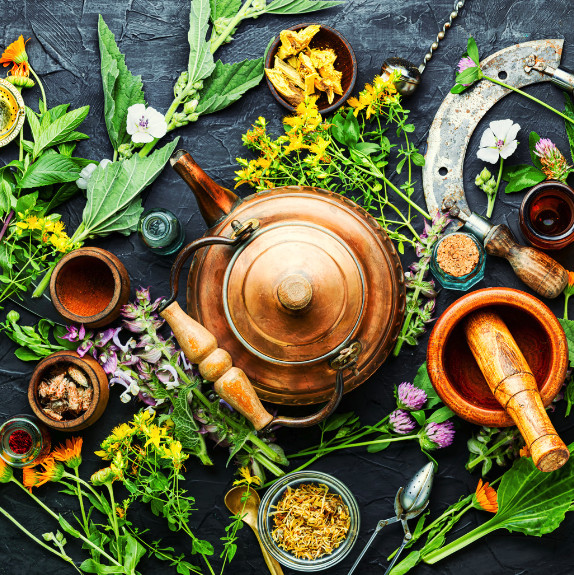
Ayurveda, the ancient holistic healing system from India, categorizes body constitutions into three primary doshas: Vata, Pitta, and Kapha. Each individual typically has a dominant dosha or combination of doshas that define their physical and mental characteristics. Balancing these doshas is crucial for maintaining health and well-being.
Ayurvedic Healing Bone Broth
Bone broth is considered tridoshic because it can benefit all three doshas—Vata, Pitta, and Kapha—when prepared and consumed appropriately. Here’s how it can be beneficial for each dosha:
Vata Balancing
Attributes: Vata is characterized by qualities like coldness, dryness, and lightness.
Bone Broth Benefits: The warming and nourishing nature of bone broth helps to counterbalance Vata's cold and dry qualities. Its rich, grounding nature can help soothe and stabilize Vata energy, making it beneficial for individuals with Vata imbalances such as anxiety, insomnia, and digestive issues. Adding warming spices like ginger or black pepper enhances its Vata-pacifying properties.
Pitta Balancing
Attributes: Pitta is associated with heat, intensity, and fluidity.
Bone Broth Benefits: Although bone broth is generally warming, it can be adapted to suit Pitta by ensuring it's not too spicy or overly heated when served. The cooling and hydrating qualities of well-strained broth can help ease inflammation and digestive discomfort typical in Pitta imbalances. Incorporating cooling herbs like coriander or cilantro can make it more suitable for Pitta individuals.
Kapha Balancing
Attributes: Kapha is known for its moist, heavy, and stable qualities.
Bone Broth Benefits: To address Kapha imbalances, which often involve congestion and sluggishness, bone broth can be made lighter and more stimulating. The light and easily digestible nature of bone broth helps to alleviate Kapha's heaviness. Adding pungent and warming spices like turmeric or cayenne pepper can further enhance its Kapha-pacifying effects.
Nutritional Profile
Bone broth is celebrated for its rich content of essential nutrients such as collagen, gelatin, and minerals like calcium, magnesium, and phosphorus. It also contains fat-soluble vitamins, which are crucial for bone health and overall vitality. The easily digestible form of these nutrients ensures that they are readily absorbed and utilized by the body, making bone broth a powerful ally in supporting joint health, skin elasticity, and gut integrity across all dosha types.
By customizing the preparation of bone broth to suit individual dosha needs, it can serve as a versatile and nourishing staple in an Ayurvedic diet, helping to promote balance and well-being. Always tailor the herbs and spices to address specific doshic attributes or imbalances for the best results.
Here is an idea for a recipe for Ayurvedic Bone Broth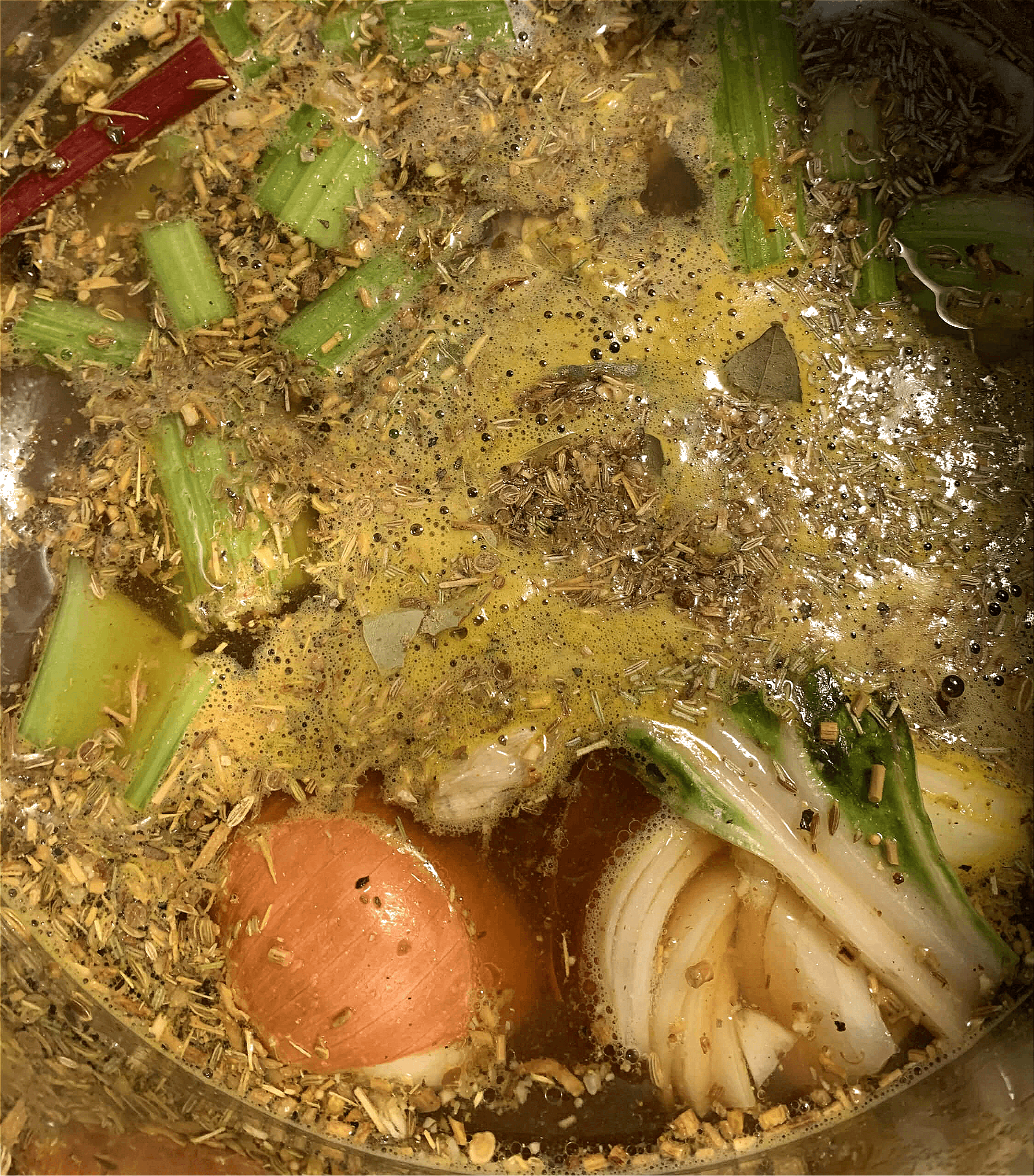

Ingredients
10 cups purified water
4 “bone marrow” beef bones (available in whole foods or most meat departments)
1 pound of chicken breast or beef stew meat (optional, but recommended for flavor)
2 carrots, sliced
2 celery sticks, sliced
1 small to medium beet, chopped (replace with sweet potato for Pitta)
1/2 onion, chopped
Fresh ginger (2 inch cube), grated or finely chopped
1/4 teaspoon each of turmeric, fennel, coriander, fenugreek, brown mustard, and cumin seed*
1/4 teaspoon black peppercorns, freshly ground
1 lemon, juiced
1/4 teaspoon pink salt, mineral salt, or sea salt
*Optional to add 1 Tbl Astragalus, Burdock Root, and/or Licorice Root for additional immune and liver support
Healing Bone Broth Recipe
1. Add the bones, chopped veggies, fresh ginger, turmeric, fennel, coriander, fenugreek, brown mustard, cumin seed, and black pepper to the crock pot. If meat is being used, add this now as well.
2. Fill the crock pot with water until it is 2 to 3 inches from the top.
3. Cover the pot and turn it on a low setting. Cook for 10 to 16 hours. If needed a high setting can be used for 6 to 8 hours.
Optional Doshic Variations
Vata
This recipe is very beneficial for Vata types and is great during times of Vata imbalances such as depletion, weakness, constipation, osteoporosis, and arthritis. If there is anemia, it is recommended to use a red meat to steep with the bones. Otherwise, no changes are needed!
Pitta
Pitta types can replace the beets and onion with more cooling root veggies such as sweet potatoes and parsnips. They should replace the lemon with lime and add in fresh cilantro leaves (about 1/2 cup). Pitta types should avoid adding any red meat to the base. White meat chicken would be a better option if meat is to be added. Otherwise, this recipe is very beneficial for Pitta and an effective way to reduce inflammation in the body.
Kapha
To enhance digestion, they can add in extra heating spices such as cayenne pepper. They can also add in chopped garlic cloves, chili pepper and/or a splash of apple cider vinegar if desired. The salt should be kept to a minimum, ideally using pink Himalayan which is best for Kapha types. This is a great option for Kapha types as a healthy and light snack between meals!
Perhaps you dont want to use bones in your breath, totally understandable and you should do you. So here is a simple veggie broth recipe and you can incorporate any of the herbs and spices and improvise to make it how you like it!
Vegetable Broth
*4-5 Servings
3 Stalks Celery
3 Carrots
3 Cloves Garlic
2 Onions
1 inch each minced fresh Ginger & Turmeric
2 Bay Leaves
3 Cups Misc Vegetable Scraps
Option to add coriander, cumin, fennel, fenugreek, salt, pepper, thyme, astragalus, burdock root, licorice root
Directions
Simmer on the stove for 30-60 Minutes. Remove from heat and allow to cool for some time. Strain and refrigerate up to 1 week or freeze up to 6 months.
Slow cook in a crock pot for up to 8 hours.
4. Strain the broth. Add the fresh lemon juice and salt, and then place the broth into glass jars or glass Tupperware to let cool.
5. If you are sensitive to the fat, you can let the broth cool in the refrigerator before consuming and scrape the layer of fat off of the top. Once refrigerated, this broth will last up to a week. 7. The remaining strained vegetable ingredients can be consumed, added to other dishes, given to the dog (NOT the bones!) or composted. The bones should be tossed in the garbage (once again, do not give them to the dog after cooking). 8. If there is extra broth, you can freeze it in ziplock bags or plastic tupperware as needed. This will last for 3 to 6 months. 9. Try to consume at least a cup of broth every day. Feel free to drink the broth like a tea or make this as a base for soups, dal, kitchari or any other appropriate dish. It makes everything more nourishing and improves the taste!
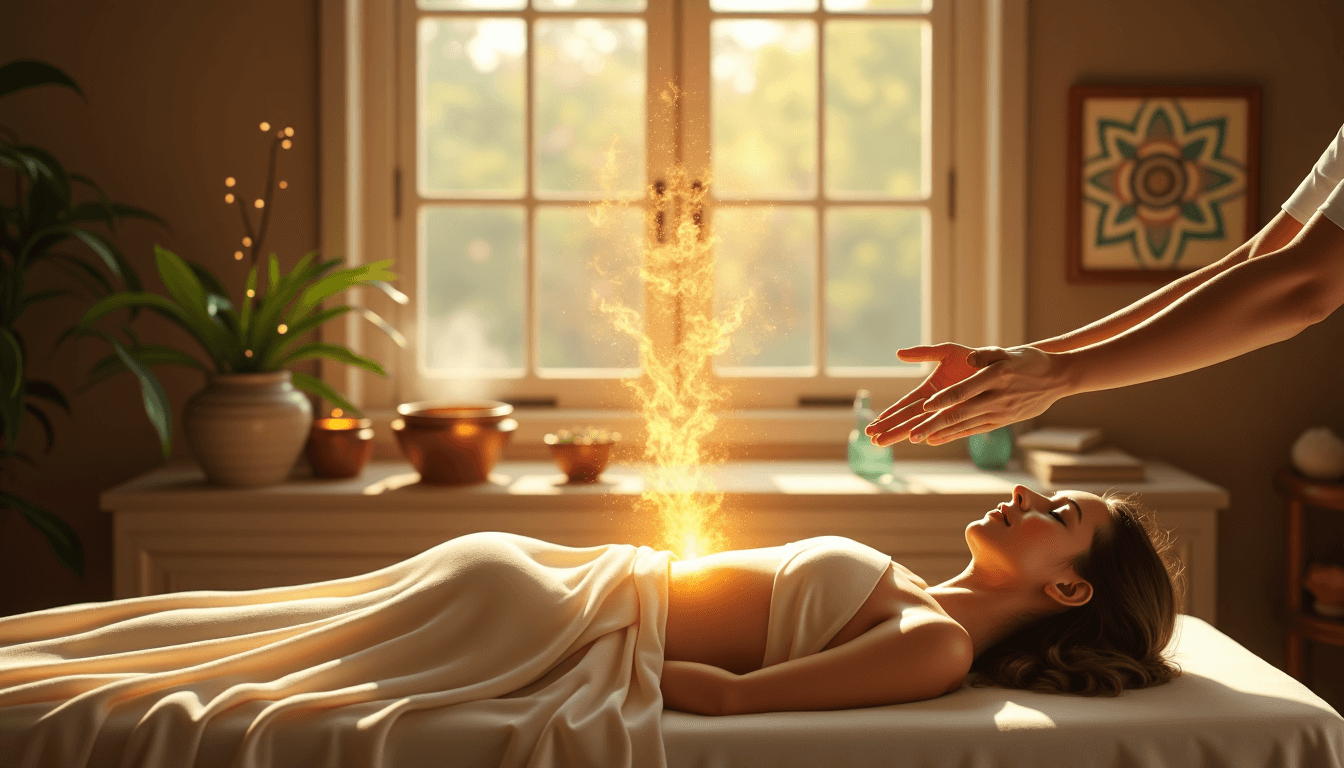 Image Source: AI Generated
Image Source: AI GeneratedThe quest for holistic healing has led many modern practitioners back to ancient wisdom. Polarity therapy, a comprehensive healing system developed in the mid-20th century, draws deeply from Ayurveda's 5,000-year-old principles of energy medicine.
This unique blend of Eastern and Western healing approaches offers a powerful framework for understanding the body's energy systems. Through its integration of Ayurvedic concepts like chakras, elements, and energy flow, polarity therapy provides a modern interpretation of time-tested healing wisdom.
In this article, we explore the fascinating connection between polarity therapy and Ayurveda, examining how ancient principles inform modern healing practices. We'll uncover the philosophical foundations, energy concepts, and practical applications that bridge these two powerful healing traditions.
The Ancient Roots of Polarity Therapy
At the heart of modern energy medicine lies a remarkable synthesis of healing wisdom, pioneered by Dr. Randolph Stone, a skilled practitioner of osteopathy, naturopathy, and chiropractic care [1]. His quest to understand the fundamental principles of healing would lead to the creation of polarity therapy, a system that bridges ancient Eastern wisdom with Western medical knowledge.
Origins in Ayurvedic Medicine
Dr. Stone's work began with a crucial observation: across different cultures and healing traditions, the concept of life energy remained central [1]. While this energy carried different names - chi, ki, or prana - its importance in maintaining health was universal. Stone noticed striking similarities between various healing systems, particularly in their understanding of energy flow and balance.
Dr. Stone's Journey to India
In 1955, Stone embarked on a transformative journey to India, spending six months studying and teaching in Bombay and Jalandhar [2]. This wasn't just a brief visit - he established a pattern of spending half of each year in India, immersing himself in the spiritual and healing traditions of the East [2]. His dedication to understanding Eastern wisdom led to his initiation into the Radha Soami Satsang Beas tradition in 1945 [3].
Integration of Eastern and Western Healing
Stone's genius lay in his ability to weave together diverse healing traditions. His background included:
- Western medical practices (osteopathy, chiropractic)
- Traditional Chinese medicine
- Ayurvedic principles
- Yogic practices
- Reflexology
This integration wasn't merely theoretical. Stone took the practical aspects of Ayurvedic marma points therapy and skillfully combined them with Western techniques like osteopathic spinal alignment and craniosacral therapy [4]. He believed that lasting healing required more than just mechanical manipulation of the body - it needed an understanding of the body's energy systems [4].
What made Stone's approach unique was his practical application of esoteric knowledge. He developed a comprehensive system that addressed not just physical symptoms but the underlying energy patterns that influence health [1]. His work showed that when there's proper energy flow, the body naturally moves toward balance and healing.
By the time he retired to India in 1974 [2], Stone had created a healing system that honored both the scientific precision of Western medicine and the energetic wisdom of Eastern traditions. His work continues to influence practitioners who seek to understand the deeper dimensions of healing.
Understanding the Five Elements
The five elements form the cornerstone of both Ayurvedic wisdom and polarity therapy's healing approach. These fundamental building blocks—ether, air, fire, water, and earth—create the foundation for understanding how energy moves through our bodies [5].
Elemental Theory in Ayurveda
In Ayurvedic tradition, these five elements are more than physical matter—they're the basic qualities that shape our existence [6]. Each element carries distinct characteristics:
- Ether (Space): Governs stillness, peace, and mental clarity
- Air: Controls movement, agility, and lightness
- Fire: Manages heat, vitality, and transformation
- Water: Influences flow, connections, and emotional balance
- Earth: Provides structure, stability, and grounding [7]
Application in Polarity Therapy
Polarity therapy uniquely interprets these elements through the lens of energy medicine. Each element corresponds to specific body functions and energy patterns [8]. The therapy recognizes that these elements are present in every cell of our body, working in harmony to maintain health [8].
In practice, polarity therapists work with these elemental energies through specific hand positions and therapeutic touches. As energy currents flow down the body, they create crossing points called chakras, each relating to different elemental qualities [5].
Balancing Elements for Healing
When elements become imbalanced, specific symptoms can emerge. For instance, a fire imbalance might manifest as digestive issues or inflammation, while an air imbalance could lead to nervous system disorders [4].
The beauty of polarity therapy lies in its practical approach to elemental balance. Through gentle bodywork, practitioners help release blocked energy patterns, allowing the elements to flow freely [4]. This process often reveals deeper emotional patterns—for example, unresolved resentments might manifest as a fire element disturbance, showing up as physical symptoms in the solar plexus area [4].
Understanding these elemental relationships helps practitioners and clients work together to restore balance. By becoming aware of how thoughts and feelings get stored in the body, individuals can release blockages and allow elemental energies to flow naturally, often leading to the spontaneous resolution of various symptoms [4].
The Three Gunas and Energy Principles
Deep within the heart of polarity therapy lies a profound understanding of the three universal energetic qualities known as the gunas. These fundamental forces, borrowed from Ayurvedic wisdom, shape how energy moves and transforms within our bodies.
Sattva, Rajas, and Tamas
The three gunas represent distinct qualities that influence our physical and mental well-being. Sattva embodies balance, wisdom, and harmony, representing the state of optimal health. Rajas manifests as action and movement, while Tamas represents inertia and stability [9]. These qualities aren't just philosophical concepts—they're practical tools for understanding how energy flows through our bodies.
Polarity's Interpretation
Polarity therapy uniquely translates these ancient principles into hands-on healing techniques. Practitioners use three distinct types of touch, each corresponding to a specific guna:
- Sattvic Touch: Light and gentle, creating openness and receptivity to healing
- Rajasic Touch: Stimulating and energizing, helping awaken blocked energy
- Tamasic Touch: Deep and dispersing, breaking up energy crystallizations [10]
This three-fold approach allows practitioners to work with energy in its different manifestations, adapting their touch based on the client's needs and the type of blockage being addressed [11].
Energy Flow and Balance
In polarity therapy, practitioners understand that energy moves in specific patterns—flowing outward from a neutral center (Sattva), expanding through active force (Rajas), and then returning through contracting energy (Tamas) [12]. This continuous cycle mirrors the natural rhythms of life itself.
When these energies become imbalanced, specific symptoms can emerge. For instance, excess Rajas might manifest as anxiety or restlessness, while predominant Tamas could lead to lethargy or stagnation [9]. Through skilled application of different touch techniques, polarity therapists help restore the natural flow and balance of these energetic qualities.
The beauty of this system lies in its holistic approach. Rather than just treating symptoms, practitioners work with these fundamental energetic principles to support the body's natural healing processes. By understanding how the gunas influence both physical and mental well-being, polarity therapy offers a sophisticated framework for addressing health challenges at their energetic source [11].
Chakras and Energy Centers
Energy centers known as chakras serve as vital hubs in the body's subtle energy system, forming a crucial bridge between physical and energetic healing. These powerful centers play a fundamental role in both Ayurvedic wisdom and polarity therapy's approach to wellness.
Ayurvedic Understanding of Chakras
The concept of chakras emerges from ancient traditions, where these energy centers are seen as connecting points for major nadis or energy channels [13]. While chakras belong to the subtle body rather than the physical form, their influence extends to both bodily and mental well-being. Interestingly, the original Sanskrit writings describe chakras not as fixed structures but as fluid manifestations of energy that can be activated through specific practices [13].
Polarity's Energy Mapping
Polarity therapy offers a unique interpretation of the chakra system, focusing primarily on five main energy centers aligned with the elements [14]. According to this framework, energy enters through the third-eye center before dividing into two distinct 'rivers' of energy:
- Positive charge: Flows along the right side of the body
- Negative charge: Moves through the left side
- Neutral zone: Creates balance between the two forces [5]
These energy currents cross at specific points, creating vortexes that correspond to the five elemental chakras. Each chakra resonates with its own unique vibration and frequency, constantly exchanging energy between positive, negative, and neutral poles [14].
Therapeutic Applications
In practical application, polarity therapy practitioners employ various techniques to balance and harmonize these energy centers. The approach combines:
- Bodywork: Using specific touch patterns ranging from light to deep pressure
- Movement: Incorporating gentle rocking motions
- Energy work: Applying reflexology and precise pressure points [14]
The therapeutic process aims to restore proper energy flow when blockages occur. When chakras become imbalanced, they can manifest as physical discomfort or emotional disturbances [15]. Through skilled application of polarity therapy techniques, practitioners help release these blockages, allowing energy to flow freely through the chakra system [16].
What makes polarity therapy's approach particularly effective is its integration with other healing modalities. The system combines craniosacral techniques with Ayurvedic concepts of elements and gunas, creating a comprehensive healing approach [14]. This integration allows practitioners to address both physical symptoms and their underlying energetic causes, supporting the body's natural healing processes.
Philosophical Foundations
Beyond the physical techniques and energy principles lies a profound philosophical framework that shapes polarity therapy's approach to healing. This unique system views wellness through a lens that encompasses both tangible and intangible aspects of human experience.
Spiritual Aspects of Healing
Polarity therapy practitioners create a sacred healing space through attentive listening and wisdom, supporting clients on their personal healing journey [17]. This approach goes beyond mere physical treatment—it's about facilitating a deep reconnection with one's inner self and vital life force. The practice draws inspiration from various wisdom traditions, recognizing that healing occurs on multiple levels simultaneously [18].
Mind-Body Connection
The relationship between mental state and physical health forms a cornerstone of polarity therapy. "As we think, so we are" became one of Dr. Stone's fundamental principles [19]. This understanding reveals how:
- Negative thoughts and reactions can manifest as physical ailments
- Mental attitude directly influences energy flow in the body
- Self-awareness leads to better health outcomes
Research suggests that changes in the human energy field can influence both disease progression and healing potential [1]. This insight has led practitioners to develop approaches that address both physical symptoms and their emotional roots.
Holistic Approach to Wellness
Polarity therapy stands out through its comprehensive framework that addresses four essential pillars of health [3]:
- Bodywork: Gentle touch techniques to release energy blockages
- Nutrition: Guidelines for maintaining energetic balance through diet
- Exercise: Specific movement patterns to enhance energy flow
- Counseling: Support for emotional and psychological well-being
This integrated approach recognizes that true healing requires attention to all aspects of human experience. The therapy aims to help individuals:
- Reconnect with Self: Facilitating a deeper understanding of one's vital nature
- Release Blockages: Addressing physical and emotional obstacles to wellness
- Restore Balance: Supporting natural health through energetic alignment [17]
What makes polarity therapy particularly effective is its emphasis on personal transformation. Rather than simply treating symptoms, practitioners work to realign the body with the soul, viewing physical conditions as reflections of deeper thoughts, beliefs, and emotional patterns [19]. This perspective encourages individuals to take an active role in their healing journey, fostering greater self-responsibility and improved self-esteem.
The practice acknowledges that life energy serves as the crucial link between mind and body. When this energy flows freely, it supports not only physical health but also emotional resilience and mental clarity. Through this understanding, polarity therapy offers tools for maintaining a balanced lifestyle, empowering individuals to participate actively in their healing process [19].
Conclusion
Polarity therapy stands as a remarkable bridge between ancient Ayurvedic wisdom and modern healing practices. This comprehensive system weaves together the profound understanding of elements, gunas, and chakras with practical therapeutic applications, creating a powerful framework for holistic wellness.
The beauty of polarity therapy lies in its ability to address health challenges at multiple levels - physical, emotional, and energetic. Through its unique interpretation of Ayurvedic principles, practitioners can help release energy blockages, restore natural balance, and support the body's innate healing abilities.
Dr. Stone's pioneering work continues to offer valuable insights for those seeking deeper healing. His integration of Eastern wisdom with Western medical knowledge proves that ancient principles remain relevant and effective in modern healthcare. The system he created provides practical tools for maintaining wellness while honoring the profound connection between body, mind, and spirit.
Are you inspired to learn the fundamentals of Polarity Therapy and Marma?? Learn More
References
[1] - https://www.wellnessinstitute.net/articles/detail/17
[2] - https://www.energyschool.com/drstonechronology
[3] - https://renewcraniosacraltherapy.com/polarity-therapy/
[4] - http://www.polaritywellness.co.uk/polarity-therapy-and-ayurveda/
[5] - https://polaritytherapy.com/five-elements
[6] - https://ayurhealing.net/blog/five-elements-of-ayurveda/
[7] - https://polaritytherapy.org/2017/12/02/healing-through-the-elements/
[8] - https://polaritytherapy.org/2020/07/21/cells-and-the-five-elements-a-polarity-perspective/
[9] - https://www.easyayurveda.com/2019/01/15/tridosha-satva-rajas-tamas/
[10] - http://www.garyauerbach.com/dga/Korn - Polarity Therapy for Dementia caregivers.pdf
[11] - https://www.polaritywellness.com/polarity-therapy
[12] - https://www.positivehealth.com/article/polarity-therapy/polarity-therapy-linking-ancient-knowledge-and-modern-physics
[13] - https://www.gersonayurveda.com/giam-blog/2019/1/6/ayurveda-and-the-chakras-by-scott-gerson-md-mphil-ayurveda-phd-ayurveda
[14] - https://soniradiance.com/polarity-therapy-chakra-balancing/
[15] - https://www.windowstotheheart.net/balancing-your-energy-flow-with-polarity-therapy/
[16] - https://polaritytherapy.org/2018/02/07/science-meets-energy-a-hands-on-guide-to-the-human-energy-field/
[17] - https://polaritytherapy.com/whatispolarity
[18] - https://amadeamorningstar.net/the-institute/
[19] - https://downtoearthbodyworks.com/polarity
[2] - https://www.energyschool.com/drstonechronology
[3] - https://renewcraniosacraltherapy.com/polarity-therapy/
[4] - http://www.polaritywellness.co.uk/polarity-therapy-and-ayurveda/
[5] - https://polaritytherapy.com/five-elements
[6] - https://ayurhealing.net/blog/five-elements-of-ayurveda/
[7] - https://polaritytherapy.org/2017/12/02/healing-through-the-elements/
[8] - https://polaritytherapy.org/2020/07/21/cells-and-the-five-elements-a-polarity-perspective/
[9] - https://www.easyayurveda.com/2019/01/15/tridosha-satva-rajas-tamas/
[10] - http://www.garyauerbach.com/dga/Korn - Polarity Therapy for Dementia caregivers.pdf
[11] - https://www.polaritywellness.com/polarity-therapy
[12] - https://www.positivehealth.com/article/polarity-therapy/polarity-therapy-linking-ancient-knowledge-and-modern-physics
[13] - https://www.gersonayurveda.com/giam-blog/2019/1/6/ayurveda-and-the-chakras-by-scott-gerson-md-mphil-ayurveda-phd-ayurveda
[14] - https://soniradiance.com/polarity-therapy-chakra-balancing/
[15] - https://www.windowstotheheart.net/balancing-your-energy-flow-with-polarity-therapy/
[16] - https://polaritytherapy.org/2018/02/07/science-meets-energy-a-hands-on-guide-to-the-human-energy-field/
[17] - https://polaritytherapy.com/whatispolarity
[18] - https://amadeamorningstar.net/the-institute/
[19] - https://downtoearthbodyworks.com/polarity
